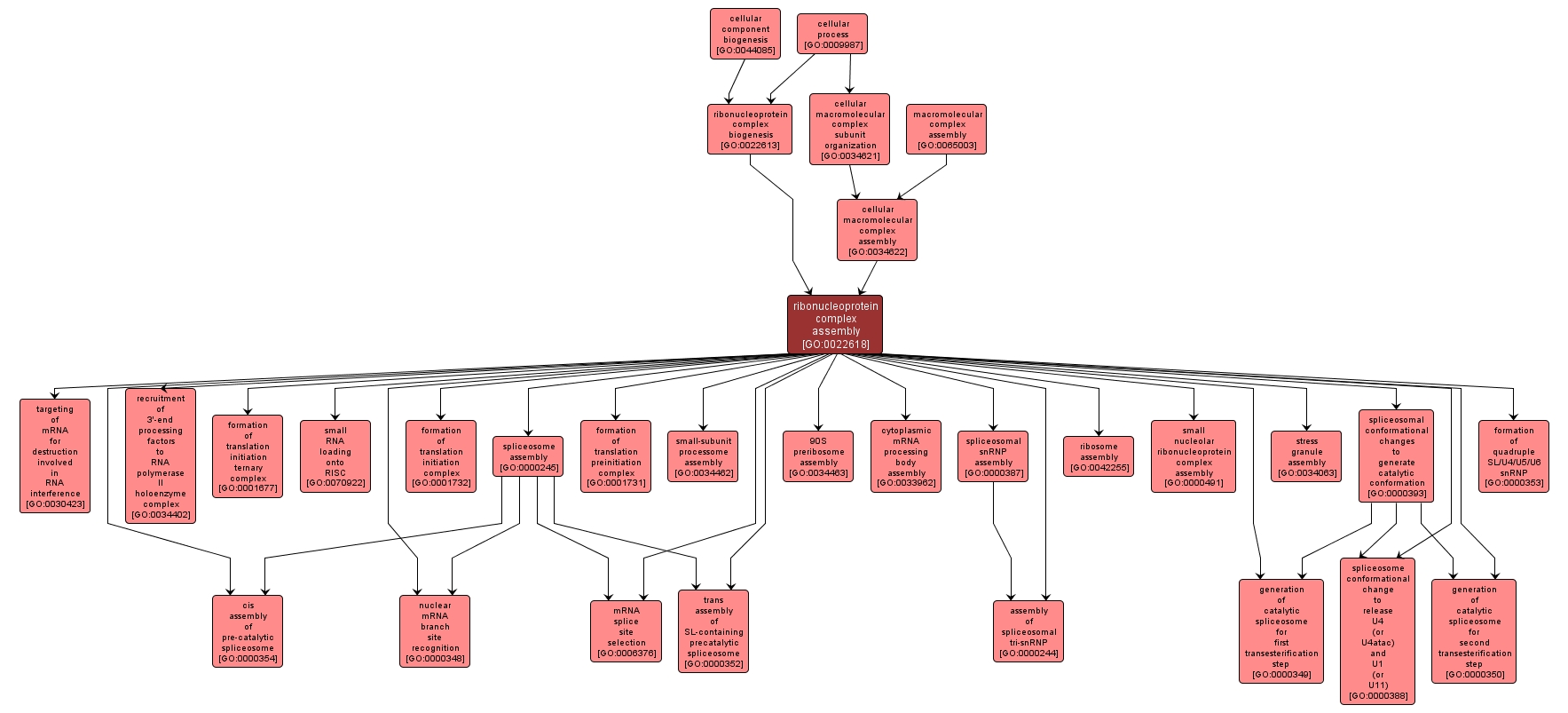GO TERM SUMMARY
|
| Name: |
ribonucleoprotein complex assembly |
| Acc: |
GO:0022618 |
| Aspect: |
Biological Process |
| Desc: |
The aggregation, arrangement and bonding together of proteins and RNA molecules to form a ribonucleoprotein complex. |
Synonyms:
- RNA-protein complex assembly
- RNP complex assembly
- protein-RNA complex assembly
|
|

|
INTERACTIVE GO GRAPH
|














